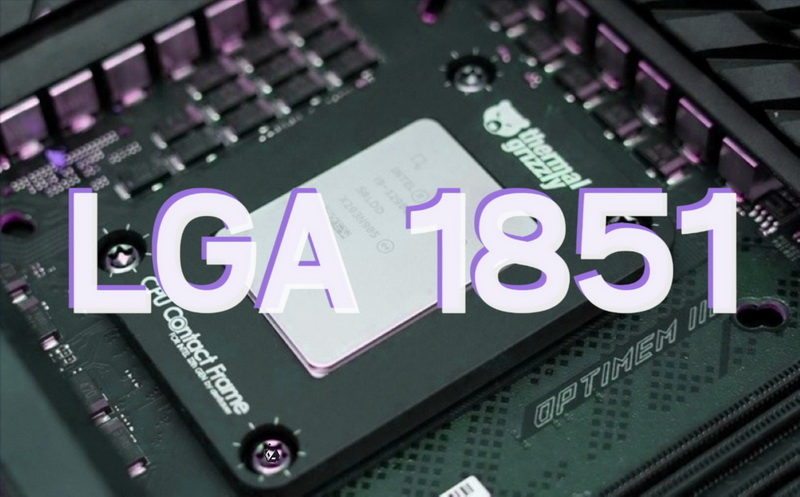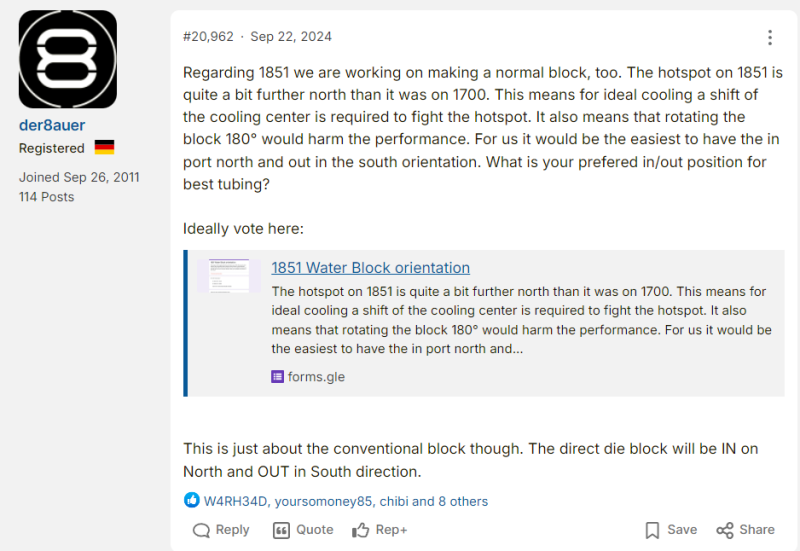It was previously reported that current models of cooling systems for the Intel LGA 1700 processor socket will be compatible with the new LGA 1851 socket for Arrow Lake-S (Core Ultra 200) desktop processors. However, as it has become known, the efficiency of current models of liquid cooling systems when working with new Intel chips may be reduced due to the design features of these processors.

Image source: WCCFTech
Future Intel Arrow Lake-S processors are designed to be installed in the new LGA 1851 processor socket. And although the dimensions of the new socket and heat-dissipating CPU cover remain almost the same as in the case of LGA 1700, there are still small but important differences between the platforms. They are not associated with the connector itself, but with Arrow Lake-S crystals.

The image does not show the actual CPU hotspot area for LGA 1851. Image source: MSI
The head of Thermal Grizzly, famous overclocker Roman Der8auer Hartung, spoke about some of the design features of Arrow Lake-S processors. According to him, the Arrow Lake-S chips for LGA 1851 have changed the location of the so-called Hotspot – the hottest point of the chip. With each generation of new processors, the location of this point on processors has shifted slightly. Moreover, the difference was sometimes observed even within the same family (see photo above).

Hotspot is typically located on-chip where the processor’s processing cores are located. Therefore, manufacturers of liquid cooling systems release new solutions for each generation of processors that take this point into account.
Compared to LGA 1700 processors, the new hotspot of Arrow Lake-S processors will be shifted to the north (top) part of the processor. For comparison, in Raptor Lake it is located closer to the center of the crystal, which allows the LSS water block to remove heat from the processor equally effectively, regardless of its orientation.

In the case of Arrow Lake-S, rotating the contact pad of the water block by 90 or 180 degrees can reduce the efficiency of heat removal, since this will change the relative position of the hotspot and the inlet/outlet pipes of the water block, and the liquid will begin to interact with the cooled surface differently. That’s why Der8auer notes that Arrow Lake-S will provide more efficient cooling if the water block inlet is located at the top of the processor and the outlet at the bottom.
Since most manufactured air cooling systems have a symmetrical base, the orientation on the processor socket does not matter for them. But for water blocks, the location of the hotspot is important to keep in mind, to the point that incorrect installation can lead to a significant increase in the temperature of the processor. Moreover, some water blocks designed for previous generation processors may not be suitable for Arrow Lake-S due to the fact that the hotspot will be in a “dead zone”, poorly flown around by coolant, in any location.